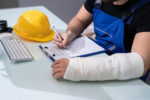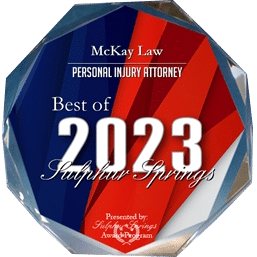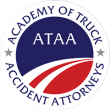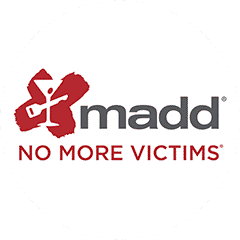Construction sites are bustling, high-energy environments essential to infrastructure development, but they are also rife with hazards. Among the most dangerous scenarios is a scaffolding accident, which can cause life-altering injuries or even fatalities. According to the Occupational Safety and Health Administration (OSHA), scaffolding accidents are responsible for nearly 4,500 injuries and over 60 deaths annually in the United States.
If you’ve been affected by a scaffolding accident—whether directly or as an employer or insurance claimant—it’s crucial to understand the causes, your rights, and the steps to take following an incident. This blog serves as your comprehensive guide to scaffolding accidents, aimed at equipping you with vital information and actionable insights.
Common Causes and Types of Scaffolding Accidents
Scaffolding is designed to be a safe support system for workers, but when safety procedures are overlooked or materials are faulty, disaster can strike. Here are the primary causes and types of scaffolding accidents:
1. Poor Installation and Maintenance
Improper assembly or failing to inspect scaffolding regularly can quickly lead to structural failure. Weak bolts, loose planks, or an unstable foundation often result in catastrophic falls.
2. Falls from Heights
Falls are the most common type of scaffolding-related accident. Whether due to a lack of harnesses or slipping on an uneven plank, these incidents frequently cause severe injuries such as head trauma, broken bones, and spinal damage.
3. Falling Objects
Construction tools, materials, or debris falling from scaffolds commonly injure workers or passersby below. Hard hats can mitigate some injuries, but they’re not always enough.
4. Electrocutions
When scaffolding is placed too close to power lines or live wires, workers risk electrical shock or electrocution. These accidents often occur in urban areas with overhead utilities.
5. Weather-Related Incidents
High winds, rain, or snow can destabilize scaffolding, making it unsafe for use. Slippery surfaces and compromised structural integrity often lead to accidents during adverse weather conditions.
Understanding Your Rights as a Scaffolding Accident Victim
If you have been injured in a scaffolding accident, knowing your legal rights can make the difference between receiving fair compensation or shouldering mounting expenses alone. Workers and victims are protected under several laws and frameworks:
Employers’ Duty of Care
Employers are legally obligated to provide a safe working environment, including properly installed scaffolding, safety gear, and regular inspections. Failing in this duty could make them liable for your injuries.
Workers’ Compensation
If you suffer an injury at work, you generally have a right to workers’ compensation benefits. This can help cover medical bills and lost wages, but these benefits often fall short of addressing pain, suffering, or long-term disability.
Third-Party Liability
If a faulty piece of equipment caused the accident, you might be able to sue the manufacturer for negligence. Likewise, subcontractors or other third parties involved in safety oversights may also be liable.
Rights as a Pedestrian
Even if you’re not a construction worker, you have the right to walk in public spaces without fearing falling scaffolding or debris. Businesses and property owners bear responsibility for ensuring nearby structures are safe.
Steps to Take After a Scaffolding Accident: Legal and Health Considerations
Experiencing a scaffolding accident can be both physically and emotionally overwhelming. However, taking the right steps in the immediate aftermath can strengthen your case and improve your recovery prospects:
1. Seek Immediate Medical Attention
Even if your injuries seem minor, get yourself checked by a medical professional. Many injuries, such as concussions or internal bleeding, may not appear immediately but can worsen over time.
2. Document the Scene
If you are able, take photographs of the accident scene, the scaffolding, and your injuries. Be sure to include any visible hazards such as broken planks or missing safety equipment.
3. File an Incident Report
Notify your employer or the property manager as soon as possible. File an official incident report and keep a copy for your records.
4. Gather Witness Information
Identify coworkers or bystanders who may have seen the accident. Their testimonies could become invaluable if legal action is necessary.
5. Consult an Attorney
Before speaking to insurance companies or agreeing to settlements, consult a personal injury attorney. Many firms offer free consultations tailored to helping accident victims secure fair compensation.
The Role of Insurance in Scaffolding Accidents: Navigating the Claims Process
Dealing with insurance companies can be a complex and frustrating endeavor, especially when it comes to workplace accidents. Here are key points to consider:
Filing a Claim
If you are covered under workers’ compensation, notify your employer and begin the claims process immediately. If the accident involves pedestrians or third parties, liability insurance usually comes into play.
Common Challenges
Insurance companies often try to minimize payouts by arguing that your injuries were pre-existing or resulted from negligence on your part. Having thorough documentation and legal support can counteract these tactics.
Proactive Measures
Review your coverage before agreeing to terms. Ask questions about liability limits, medical expense coverage, and any potential gaps in policies.
Case Studies and Real-Life Examples
Case Study 1: Faulty Scaffolding Leads to Permanent Disability
A construction worker in Ohio fell 20 feet from a scaffold that had not been inspected after a major storm. Investigations revealed that structural damage had gone unnoticed, leading to a six-figure settlement through the manufacturer’s liability insurance.
Case Study 2: Pedestrian Struck by Falling Debris
A New York City resident was injured when a loose bolt fell from scaffolding overhead. She successfully sued the property owner and construction company for failing to secure the worksite, resulting in medical coverage and additional compensation for pain and suffering.
Preventing Scaffolding Accidents: Tips for Construction Workers and Employers
While scaffolding accidents are often preventable, achieving a truly safe work environment requires collective effort. Here are actionable steps for workers and employers alike:
For Construction Workers:
- Always wear proper safety gear, including helmets and harnesses.
- Ensure scaffolding is stable and safe before starting work.
- Avoid working on scaffolding during extreme weather conditions.
- Communicate hazards immediately to supervisors.
For Employers:
- Perform routine inspections on all scaffolding and safety equipment.
- Provide comprehensive safety training to all workers.
- Adhere to OSHA standards and regulations.
- Have a clear plan in place for emergencies.
Safety is a shared responsibility—ensuring everyone goes home at the end of the day.
Taking Action and Raising Awareness About Scaffolding Accidents
If you or someone you know has been affected by a scaffolding accident, remember that you don’t have to face the aftermath alone. Legal, medical, and community resources are available to help you rebuild your life.
Want to understand your rights better or explore legal options? Contact a qualified personal injury attorney in your area. And if you’re in construction, consider advocating for stricter safety protocols within your workplace to help prevent similar tragedies.
Together, we can create safer construction sites and a world where scaffolding accidents are no longer common headlines.




